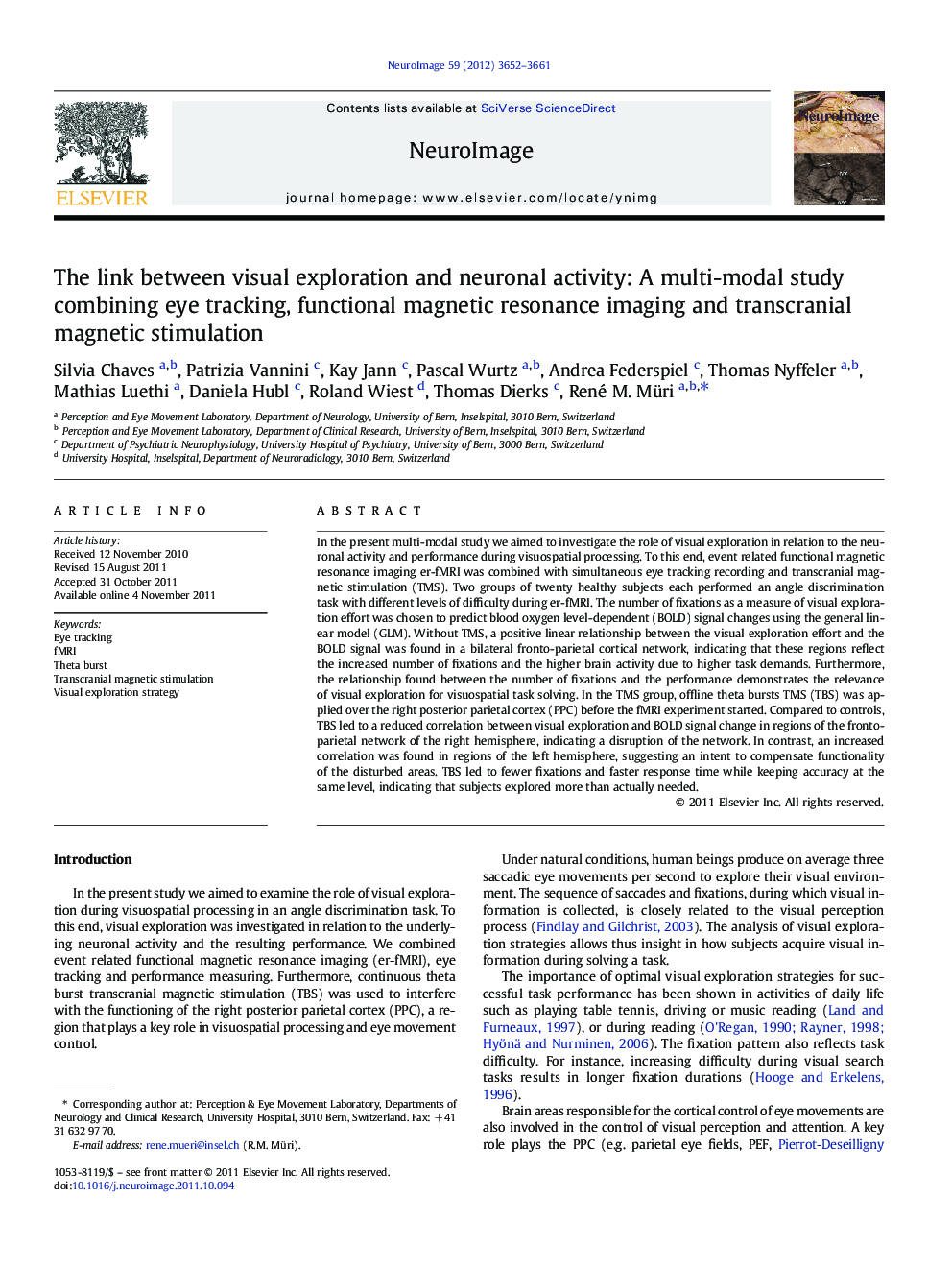| کد مقاله | کد نشریه | سال انتشار | مقاله انگلیسی | نسخه تمام متن |
|---|---|---|---|---|
| 6032771 | 1188742 | 2012 | 10 صفحه PDF | دانلود رایگان |

In the present multi-modal study we aimed to investigate the role of visual exploration in relation to the neuronal activity and performance during visuospatial processing. To this end, event related functional magnetic resonance imaging er-fMRI was combined with simultaneous eye tracking recording and transcranial magnetic stimulation (TMS). Two groups of twenty healthy subjects each performed an angle discrimination task with different levels of difficulty during er-fMRI. The number of fixations as a measure of visual exploration effort was chosen to predict blood oxygen level-dependent (BOLD) signal changes using the general linear model (GLM). Without TMS, a positive linear relationship between the visual exploration effort and the BOLD signal was found in a bilateral fronto-parietal cortical network, indicating that these regions reflect the increased number of fixations and the higher brain activity due to higher task demands. Furthermore, the relationship found between the number of fixations and the performance demonstrates the relevance of visual exploration for visuospatial task solving. In the TMS group, offline theta bursts TMS (TBS) was applied over the right posterior parietal cortex (PPC) before the fMRI experiment started. Compared to controls, TBS led to a reduced correlation between visual exploration and BOLD signal change in regions of the fronto-parietal network of the right hemisphere, indicating a disruption of the network. In contrast, an increased correlation was found in regions of the left hemisphere, suggesting an intent to compensate functionality of the disturbed areas. TBS led to fewer fixations and faster response time while keeping accuracy at the same level, indicating that subjects explored more than actually needed.
⺠Investigation of visual exploration during visuospatial processing. ⺠Close correlation between eye movements, task performance and neuronal activity. ⺠TBS weakens correlation between visual exploration and BOLD signal in right PPC. ⺠TBS led to fewer fixations and faster RT while keeping accuracy unchanged.
Journal: NeuroImage - Volume 59, Issue 4, 15 February 2012, Pages 3652-3661